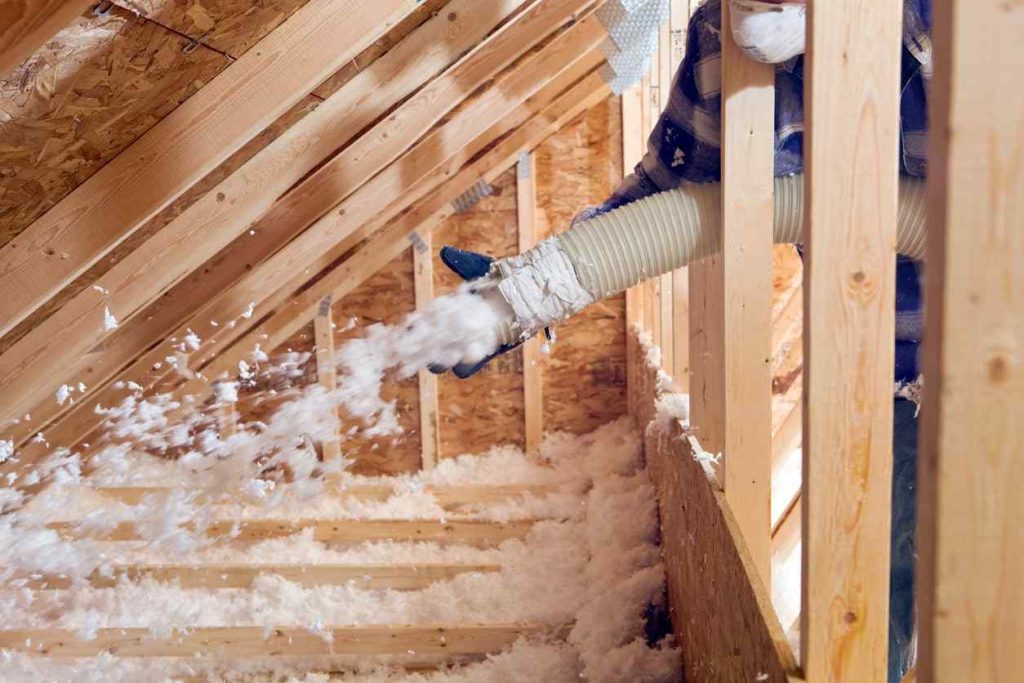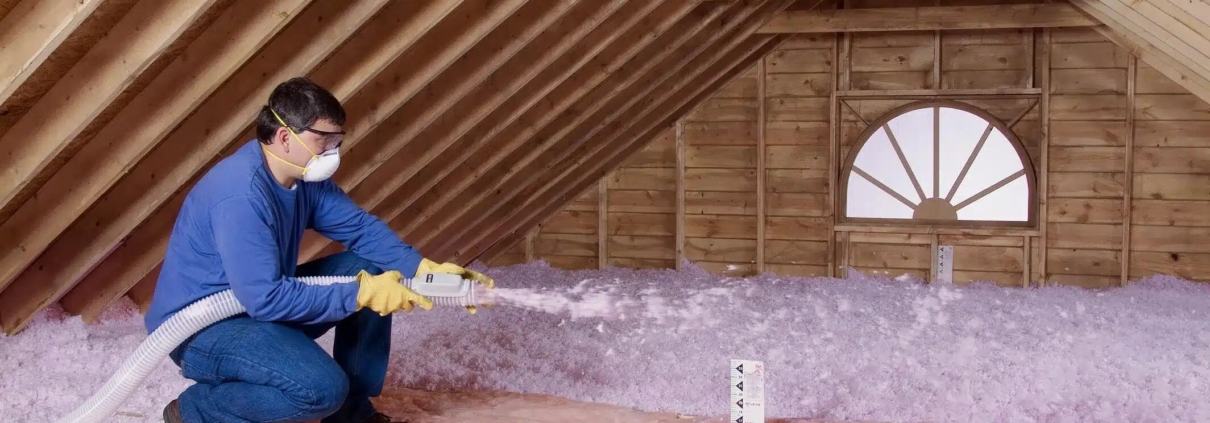A Comparative Analysis of Blown-in Insulation vs. Dense Pack Cellulose for Properties
Property owners looking to improve energy efficiency often weigh different insulation methods before making a decision. Two options that generate the most discussion are blown-in insulation and dense pack cellulose. Both methods provide thermal protection, reduce energy loss, and improve comfort, but they differ in application, performance, and long-term impact. This article examines these two insulation techniques side by side, breaking down their strengths and limitations for both residential and commercial properties.
Blown-in Insulation: What Property Owners Need to Know
Blown-in insulation services refers to loose-fill material applied with a machine that blows fibers into cavities, attics, or walls. It is often made of fiberglass, mineral wool, or cellulose. Its appeal lies in accessibility for retrofits and coverage of irregular spaces where batts or rigid boards would be difficult to fit.
How Blown-in Insulation Works
Blown-in insulation fills cavities by distributing small particles into open or closed spaces. In attics, this method spreads a uniform blanket across the surface, while in wall retrofits, small access holes allow material to be blown into voids.
Advantages of Blown-in Insulation
- Quick installation with minimal disruption
- Effective for attics with irregular layouts
- Provides a consistent blanket of coverage in open areas
Limitations to Consider
- Can settle over time, reducing R-value performance
- Less effective at air sealing compared to dense pack cellulose
- May leave gaps in walls if not evenly applied

Dense Pack Cellulose: A Closer Look
Dense pack cellulose is made from recycled paper fibers treated with fire retardants. Unlike loose-fill applications, dense pack insulation is installed under pressure, compacting fibers tightly into wall cavities. This method creates both insulation and air-sealing benefits.
How Dense Pack Cellulose Works
Installers drill small holes in the wall sheathing or siding and use specialized equipment to blow cellulose into cavities under high pressure. The material compacts tightly, reducing air infiltration and settling.
Benefits of Dense Pack Cellulose
- High air-sealing capacity due to dense application
- Reduced settling compared to loose-fill methods
- Environmentally friendly with recycled content
- Helps control moisture movement in building assemblies
Challenges with Dense Pack Cellulose
- Requires skilled installation to ensure proper density
- Installation is slower than blown-in attic insulation
- Heavier weight can add structural load considerations
Performance Comparison: Blown-in vs. Dense Pack Cellulose
When comparing blown-in insulation and dense pack cellulose, property owners should consider thermal resistance, air-sealing ability, installation context, and long-term durability.
Thermal Efficiency and R-Value Stability
Both methods deliver strong thermal performance. However, dense pack cellulose maintains R-value more reliably due to reduced settling, while blown-in loose fill may compact and lose effectiveness over time.
Air Leakage Control
Dense pack cellulose provides superior air control because of its dense application. Blown-in fiberglass or mineral wool primarily act as thermal barriers but allow more air movement.
Installation Context
- Blown-in insulation is efficient for attic retrofits and large open areas.
- Dense pack cellulose excels in wall retrofits, older properties, and applications requiring both insulation and air-sealing.
Moisture Management
Cellulose has hygroscopic properties, allowing it to buffer small amounts of moisture without losing performance. Blown-in fiberglass resists moisture absorption but does not regulate it, which can lead to condensation in certain assemblies.

Comparison Table: Blown-in Insulation vs. Dense Pack Cellulose
| Feature | Blown-in Insulation | Dense Pack Cellulose |
|---|---|---|
| Material | Fiberglass, mineral wool, or cellulose | Recycled paper cellulose |
| Application | Attics, open cavities, walls | Closed wall cavities, retrofits |
| Air Sealing | Limited | Strong air-sealing properties |
| Settling Risk | Moderate to high | Low |
| Moisture Control | Low moisture buffering | High moisture buffering |
| Installation Speed | Faster for large areas | Slower, requires skilled labor |
| Sustainability | Varies by material | High (recycled content) |
Common Questions About Choosing Between the Two
Property owners frequently ask whether one insulation method is categorically “better.” The answer depends on application and goals. Attics with large, open surfaces often benefit from blown-in fiberglass for quick coverage, while older properties with leaky walls are better candidates for dense pack cellulose.
Conclusion
Blown-in insulation and dense pack cellulose both improve comfort, reduce energy bills, and contribute to more efficient properties. The key difference lies in where and how they perform best. Blown-in insulation offers speed and coverage for open spaces such as attics. Dense pack cellulose, by contrast, combines insulation with air sealing, making it a strong choice for wall retrofits and properties that struggle with drafts.
Property owners deciding between these methods should consider not only thermal performance but also air leakage, long-term stability, and sustainability. Choosing the right method depends on whether the priority is quick attic coverage or deeper wall performance with air sealing. Both approaches, when properly installed by the best insulation services, provide long-lasting energy efficiency improvements for residential and commercial buildings.
FAQs
Is dense pack cellulose more effective than blown-in fiberglass?
Dense pack cellulose provides better air sealing and reduced settling, while blown-in fiberglass mainly delivers thermal resistance. Effectiveness depends on where it is applied.
Can blown-in insulation be used in existing walls?
Yes, but it is less precise than dense pack cellulose. Blown-in insulation may leave gaps if not properly installed, while dense pack fills cavities more consistently.
Does cellulose insulation attract pests or mold?
No. Cellulose insulation is treated with fire retardants that also deter pests and resist mold growth when properly installed in dry conditions.
How long does blown-in insulation last?
Blown-in insulation can last decades but may lose effectiveness if it settles or is disturbed. Dense pack cellulose maintains performance longer due to compacted installation.
Which insulation is more environmentally friendly?
Dense pack cellulose generally has a lower environmental impact because it is made from recycled paper and reduces air leakage, lowering long-term energy use.
Author: Skeeter Aimone, co-founder of High Country Solutions, develops eco-friendly products to improve sustainability in outdoor gear. Brad Morrison leads the company’s technology strategy, creating systems that enhance outdoor experiences with a focus on environmental responsibility. Established in 2018, they bring years of experience to advancing sustainable outdoor living through high-performance, responsible insulation materials.
Reviewer: Samuel Harris has worked across various roles in spray foam insulation over 11 years. His review focused on how businesses can better present their services to both new and returning clients.



Leave a Reply
Want to join the discussion?Feel free to contribute!